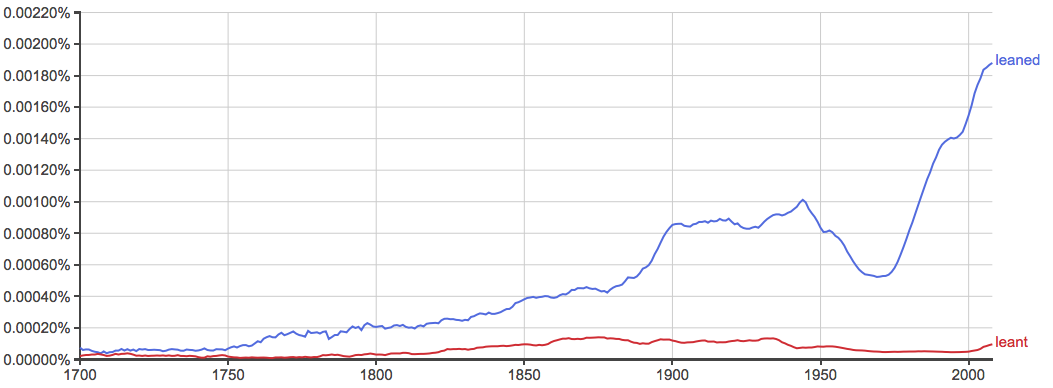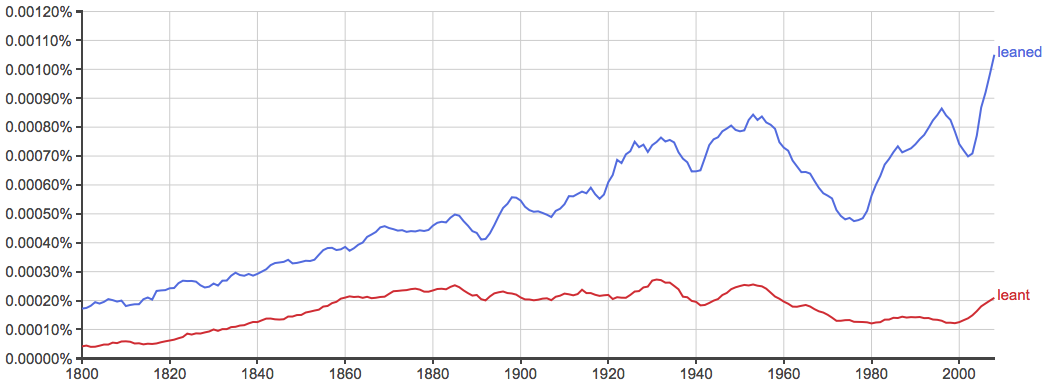How Do You Spell Lean To
As languages evolve, some words fall out of style. They are usually replaced, sometimes by a different version of the same word, or sometimes by a new word altogether. This is how languages alter to fit the needs of the people who employ them.
Leant and leaned are onetime words—their root verb, lean, has origins in Latin and was first recorded in its modern grade in the late 18th century. Today, about writers use leaned, but is at that place ever a state of affairs to apply leant?
Keep reading to learn more than.
What is the Difference Between Leant and Leaned?
In this commodity, I will compare leant vs. leaned, and use each word in several example sentences.
I volition too talk over a memory tool that you can use to help you determine whether leaned or leant is the better word to choose for your own writing.
When to Utilize Leaned
 What does leaned mean? Leaned is a verb. Information technology is the past tense conjugation of the verb lean, which ways to prop upward against something or to exist kleptomaniacal to i side.
What does leaned mean? Leaned is a verb. Information technology is the past tense conjugation of the verb lean, which ways to prop upward against something or to exist kleptomaniacal to i side.
Lean can be used either with or without an object, like in these sentences,
- The sheriff chewed harbinger as he leaned against the fencepost, waiting for the farmhands to come domicile.
- Walker saturday down at the tabular array and leaned his rifle against a wall.
- The barn leaned badly to the due south, and looked as if it were virtually to collapse at whatsoever second.
- Players leaned into the machines, their fingers fast-twitching on the flipper buttons, punctuating this with emphatic body English language and jostling the car to coax the ball in different directions. –The New York Times
When to Utilise Leant
What does leant mean? Leant is another version of the aforementioned word. Leant is an outdated form that fell out of favor at some point before 1700, and has been used just rarely always since.
Here is a nautical chart that shows the usage frequencies of leant vs. leaned:

As you can run across from the in a higher place chart, the distribution of these ii words is not even close. Leaned is clearly the standardized word in Modern English. Bryan Garner, of Garner'south Modern American Usage, estimates the use to be twenty:1 of leaned vs. leant.
Lent is relatively more common in British English than in American English, and you can yet find it in British publications every now so.
- Instead nosotros leant in and ordered ourselves a adequately archetype eastern Mediterranean dinner: meze, grills, sweet pastries and lashings of slightly gruff red wine. –The Telegraph
Despite its occasional utilize in British English, still, British authors still heavily favor leaned (encounter below).

Trick to Recall the Difference
There isn't much to remember with leaned vs. leant. You should apply leaned in all modern applications. Leant has not seen mutual use in multiple centuries, and leaned is standard in all English-speaking communities.
If you were writing menstruum fiction, and wanted to capture the manner some speakers of English really talked in a bygone era, leant might exist a good tool to use. Information technology should exist avoided in other situations though.
Leant shares its T with the word antique. Leant, like other antiques, is very quondam. You can use this clue every bit a reminder that leant is outdated and should be avoided.
Summary
Is it leant or leaned? Leant and leaned are two spelling variants of the same word, which is a past tense of the verb lean. Lean means to be crooked to ane side or to prop against something.
- Leaned is the modern spelling of the discussion.
- Leant is an outdated spelling.
Since leant and antique are both spelled with the letter T, you tin link these words together in your heed to recall that leant is too old for regular employ.
In summary, leaned is the modern form of this word while leant is blowsy.
Source: https://writingexplained.org/leant-or-leaned-difference

0 Response to "How Do You Spell Lean To"
Post a Comment